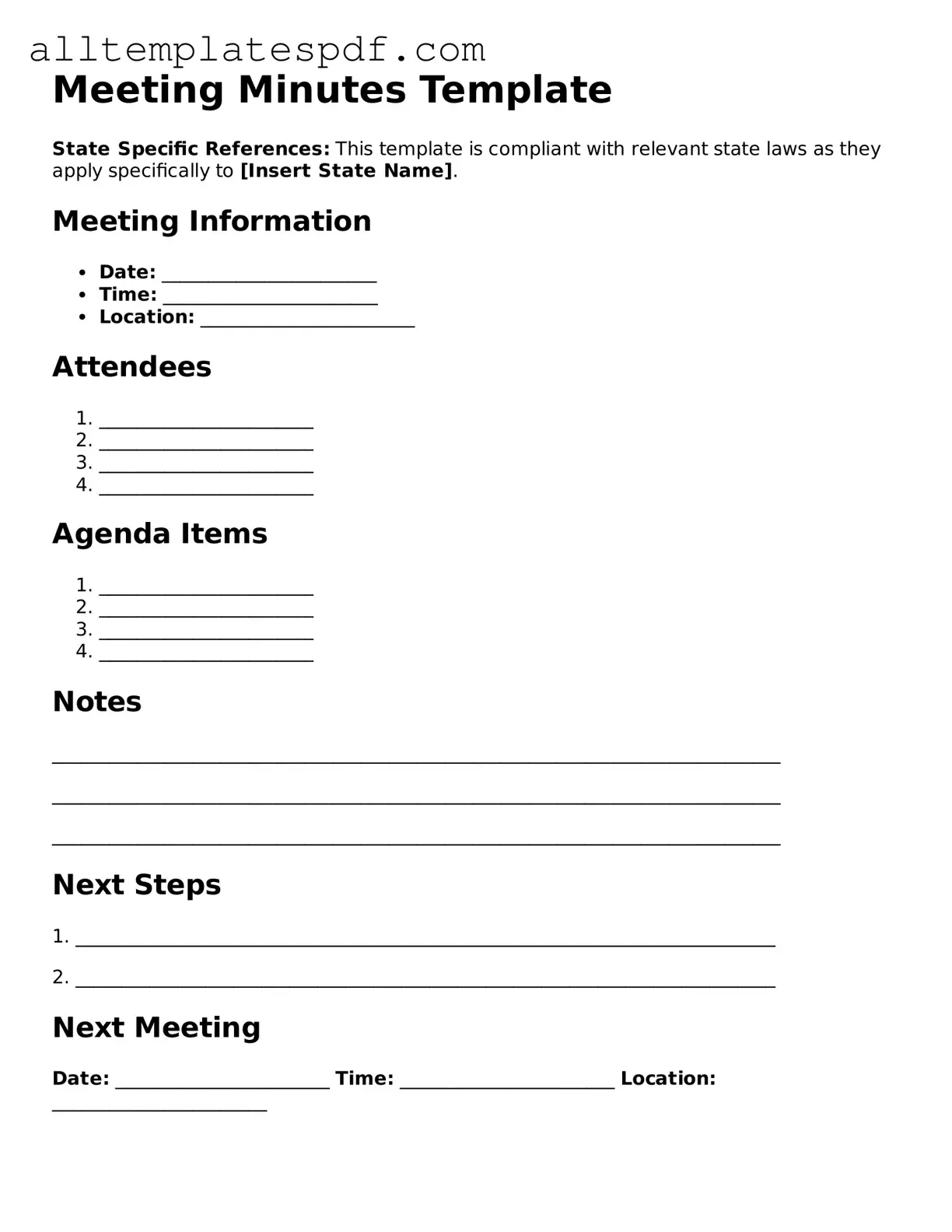Filling out a Meeting Minutes form can seem straightforward, but many individuals make common mistakes that can lead to confusion or miscommunication. One frequent error is neglecting to include the date and time of the meeting. This information is crucial for future reference and helps to establish a timeline of events.
Another mistake is failing to list all attendees. Not noting who was present can create uncertainty about who contributed to discussions or decisions made during the meeting. It’s important to ensure that everyone’s participation is documented.
Inadequate detail in the minutes is also a common issue. Summarizing discussions too briefly can omit vital information. Each point discussed should be captured clearly to provide a comprehensive record of the meeting.
Some individuals overlook the action items that arise during meetings. These items should be clearly outlined, along with the person responsible for each task. Without this clarity, accountability may be lost, and tasks could fall through the cracks.
Another common mistake is mixing up the order of topics discussed. Meeting minutes should follow the agenda closely to maintain clarity. When the sequence is jumbled, it can confuse readers trying to understand the flow of the discussion.
Omitting decisions made during the meeting is a critical error. Each decision should be clearly documented, as this serves as a record of the group's consensus and can guide future actions.
Some people forget to include the next meeting date. This information is essential for planning purposes and helps attendees prepare for future discussions.
Using unclear or ambiguous language can lead to misinterpretations of the minutes. It is vital to use precise language to ensure that the intent of the discussions and decisions is easily understood by all readers.
Another mistake is failing to distribute the minutes in a timely manner. Sending the minutes out soon after the meeting ensures that the information is fresh in everyone’s mind and allows for quick follow-up on action items.
Finally, neglecting to proofread the minutes before distribution can result in typographical errors or inaccuracies. A careful review can help catch mistakes that might otherwise lead to misunderstandings.
